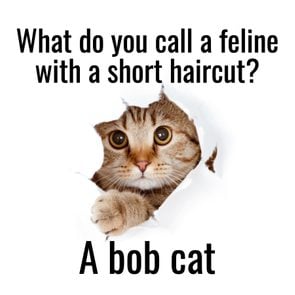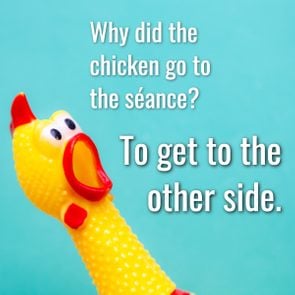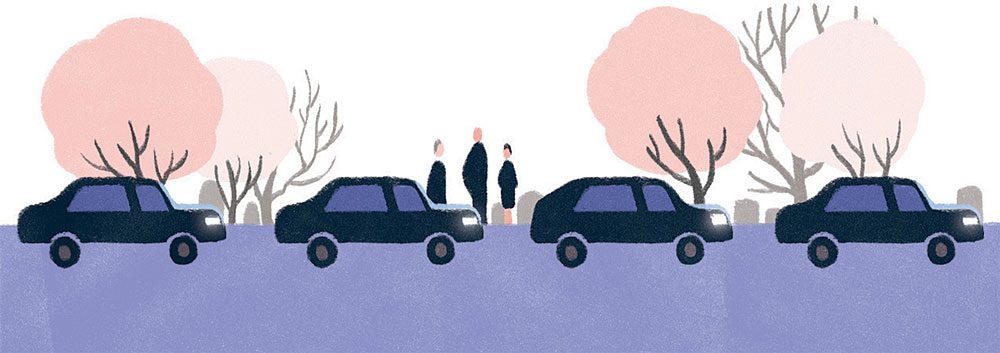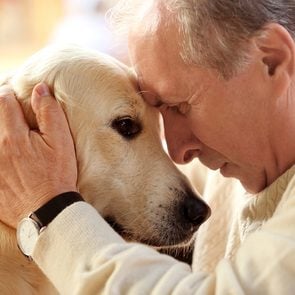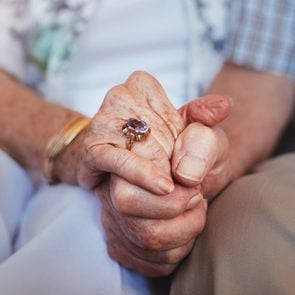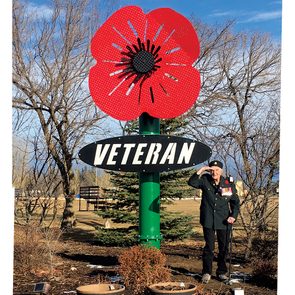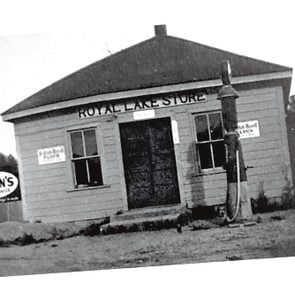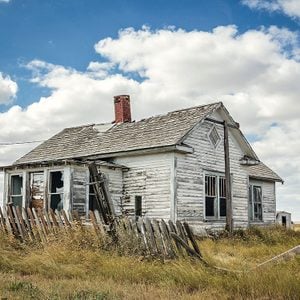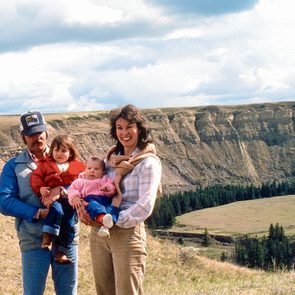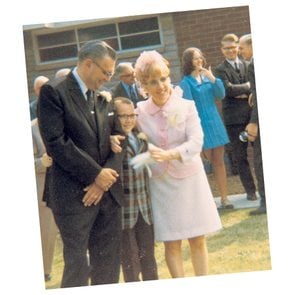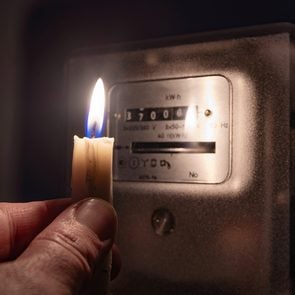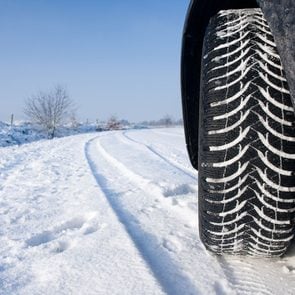
What is heart disease?
Heart disease, which affects 1 in 12 Canadians over 20, is actually a group of diseases. It includes coronary artery disease (hardening of the arteries), arrhythmias (irregular heartbeats) and abnormalities in the heart’s shape, called structural disease. Any of these issues can lead to heart failure, which is when the heart becomes unable to pump enough blood around the body—a condition that affects 100,000 Canadians every year. Heart failure lowers a person’s quality of life considerably, due to shortness of breath, constant fatigue and trouble sleeping. It can ultimately become life-threatening if left untreated.
Other medical conditions, your biological sex, and your genes can all affect your risk of developing heart disease, but lifestyle factors can also come into play—including smoking, physical activity, diet and alcohol consumption. And it’s those lifestyle factors that can be changed to prevent, or even reverse heart disease in the form of coronary artery disease, also called atherosclerosis.
What does it mean to reverse heart disease?
According to Dr. Salim Yusuf, professor of medicine at McMaster and chief scientist and cardiologist at Hamilton Health Sciences, if coronary artery disease is caught early enough, it can be reversed—that is, the heart can be brought back into a healthy, functioning state.
Since so many adults are at risk of heart disease—nine out of ten Canadians have at least one risk factor—monitoring blood pressure, blood glucose, and cholesterol can help you know if your risk is increasing. Ideally, your doctor would notice these markers before you have any symptoms, such as chest pain, shortness of breath or light-headedness.
“Once heart disease is fully established,” says Yusuf, “only in some patients—maybe a third or fourth of cases—can it be reversed to some extent.” He notes, however, that even in these cases, its progression can be stopped.

What kind of lifestyle changes can reverse heart disease?
Yusuf says that quitting smoking cigarettes—or not beginning if you don’t smoke already—is one of the best ways to both prevent and reverse heart disease. Smoking increases plaque in our arteries, leading to atherosclerosis, while the chemicals in cigarettes cause the blood to thicken and create clots, which can lead to strokes. About 16 per cent of the 70,000 deaths caused by heart disease or stroke in Canada happen because of smoking. But people who quit smoking can start seeing benefits immediately—within one year, the risk of a heart attack drops significantly, and the risk of coronary artery disease drops by half.
In addition, Yusuf says that exercise—even small things like incorporating daily walks into your routine or climbing up a few flights of stairs—can make a real difference. That’s because physical activity can help to lower blood pressure, increase healthy types of cholesterol, and improves your muscles’ ability to take oxygen from blood, which reduces the need for your heart to pump as hard. One study found that increased leisure physical activity resulted in a 21 to 29 per cent reduction of coronary artery disease events.
A healthy diet high in fruits and vegetables and low in carbohydrates and highly processed foods can help, too, by improving cholesterol levels, reducing blood pressure and allowing you to maintain a healthy weight.
If heart failure can’t be reversed, can it be treated?
According to Dr. Jacqueline Joza, a cardiac electrophysiologist and assistant professor of medicine at McGill University, determining how to treat heart failure depends on the underlying cause. Someone with a narrowing of the arteries may first be prescribed medications. For blood pressure, these can include diuretics, beta-blockers or ACE inhibitors, while cholesterol is most often treated with statins. Diabetes is most commonly treated with insulin—though the type and amount will vary depending on your diagnosis.
If your doctor determines that you need surgery to treat your coronary artery disease, they may suggest an angioplasty, which opens up blocked or narrow coronary arteries, or a coronary artery bypass surgery, which redirects blood flow around the narrowed arteries.
What are the benefits of reversing heart disease?
Heart disease can take a huge toll on a person’s quality of life, limiting the activities they can take part in. As much as 70 per cent of people with heart failure experience depression, though it’s a two-way street—some are diagnosed after heart failure, while people with pre-existing depression seem to have a higher rate of heart disease. What’s more, over 40 per cent also experience cognitive impairments. For example, vascular dementia, which occurs when there is not enough blood flow to the brain, can be caused by coronary artery disease.
Joza adds that reversing heart disease can mean going for a walk without struggling to breathe and getting a better night’s sleep. These things, in turn, create a positive feedback loop—you feel better, so can do more of the activities that increase your quality of life.
Since the heart delivers blood to all your organs, a healthy heart can also prevent problems in other parts of your body, including your kidneys, liver and lungs. While reversing heart disease might seem overwhelming, Yusuf says he’s seen it happen for many people in his practice. It’s “absolutely possible,” he says.
Now that you know how to reverse heart disease, find out what happens when you start walking 10,000 steps a day.
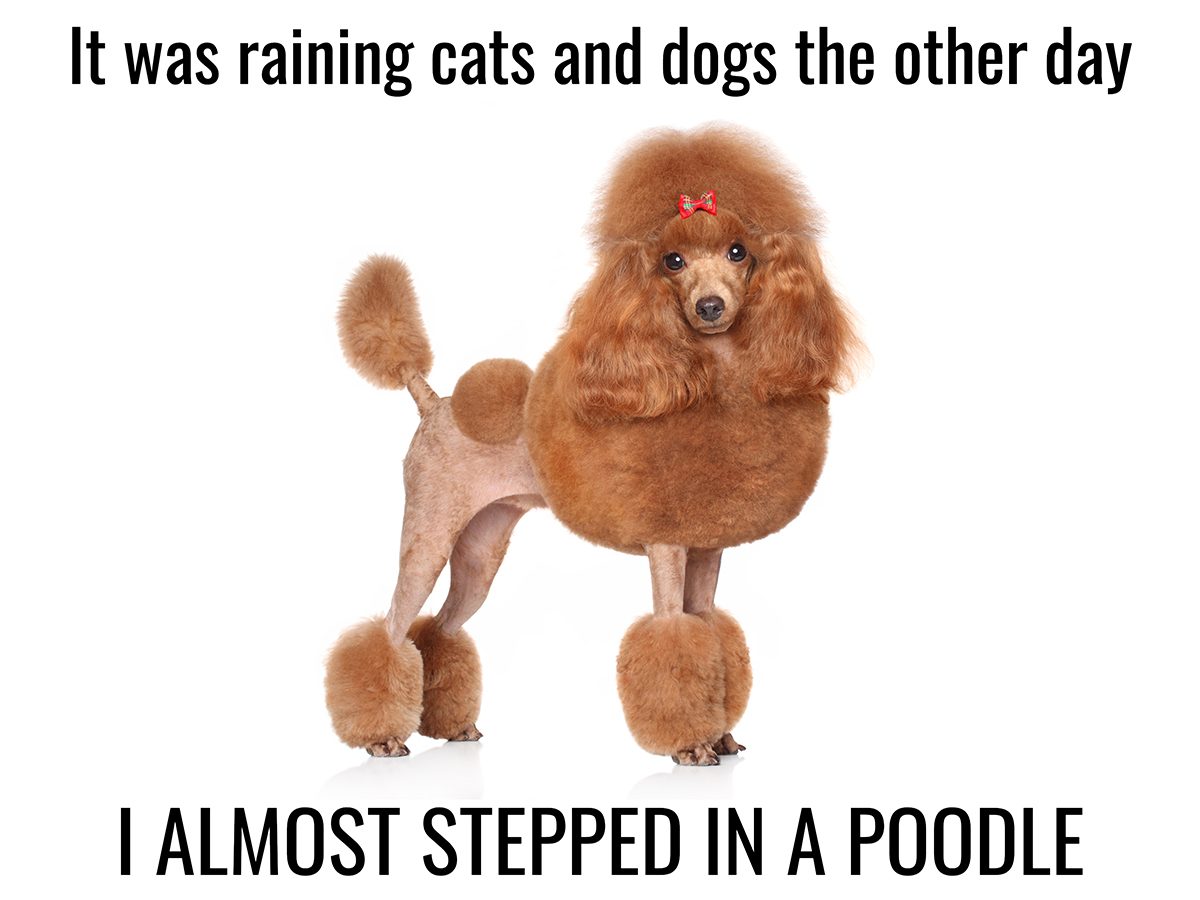
These Dogs Jokes Will Hit Your Punny Bone
Q: What do you call sleeping puppies?
A: Hush Puppies
—Reddit.com
It was raining cats and dogs the other day.
I almost stepped in a poodle.
—@braintickler_
Q: What’s the coolest dog?
A: A pup-sicle
—Reddit.com
Q: Why did the snowman call his dog Frost?
A: Because frost bites
—@funnydogjokes
Q: Which dog breed loves living in the Big Apple?
A: A New Yorkie
—parade.com
Q: Why wasn’t the dog a smooth talker?
A: Because all he ever said was “Rough, Rough”
—@DrDogs247

Old Dog Jokes, New Tricks
I watched my dog chase his tail for 10 minutes and thought “Wow, dogs are so easily entertained”. Then I realized I just watched my dog chase his tail for 10 minutes.
—@HistoryyClub
Q: What do you call a magic dog?
A: A labra-cadabra-dor
—Reddit.com
Q: What trick did the loaf of bread teach the dog?
A: Roll over!
—@DougGreenAuthor
I named my dog Stay, so I can say, ‘Come here, Stay! Come here, Stay!’
—Steven Wright, comedian
Q: Why did the poor dog chase his own tail?
A: He was trying to make both ends meet!
—@funnydogjokes
Q: Why is it called a litter of puppies?
A: Because they’ll trash the place.
—Reddit.com
I asked my dog what he’d actually do if he caught the Fed Ex person, and he admitted he hadn’t thought that part through yet.
—@LizHackett
Here are 25 purr-fectly hilarious cat GIFs for every occasion!

Paws-sionate Parenting
The reason I love my dog so much is because when I come home, he’s the only one in the world who treats me like I’m The Beatles.
—Bill Maher, comedian
I refuse to take my dog on road trips anymore.
He can be such a bark seat driver.
—@PerfectDay2Play
You don’t have to save so your dog can go to college and then find out after they graduate that they want to be an actor.
—Jim Gaffigan, comedian
Q: What do you get when you cross a dog and a calculator?
A: A friend you can count on.
—@dooglesnfts
Dogs have no money. Isn’t that amazing? They’re broke their entire lives. But they get through. You know why dogs have no money? No pockets.
—Jerry Seinfeld, comedian
My dogs love me. Of course, by “love” I mean “poop” and by “me” I mean “everywhere”.
—Dana Gould, comedian
Check out the funniest jokes from 50 up-and-coming Canadian comedians.

Bone Appetit
Q: What do you call a dog that has been left outside in the cold for an extended period of time?
A: A chili-dog
—Parade.com
Most of being a dog owner is yelling WHAT DO YOU HAVE IN YOUR MOUTH
—@goldengateblond
Did you hear the one about the dog who ate a bunch of garlic?
His bark was worse than his bite.
—foodjokes.one
“I better not eat that.” -no dog ever
—@daveshumka
Q: What’s a dog’s favourite food?
A: Pawsta.
—Punstoppable.com
Q: When you cross a sheepdog with a rose, what do you get?
A: A collie-flower
—Parade.com
If these dog jokes gave you a giggle, don’t miss our countdown of the funniest knock-knock jokes of all time!
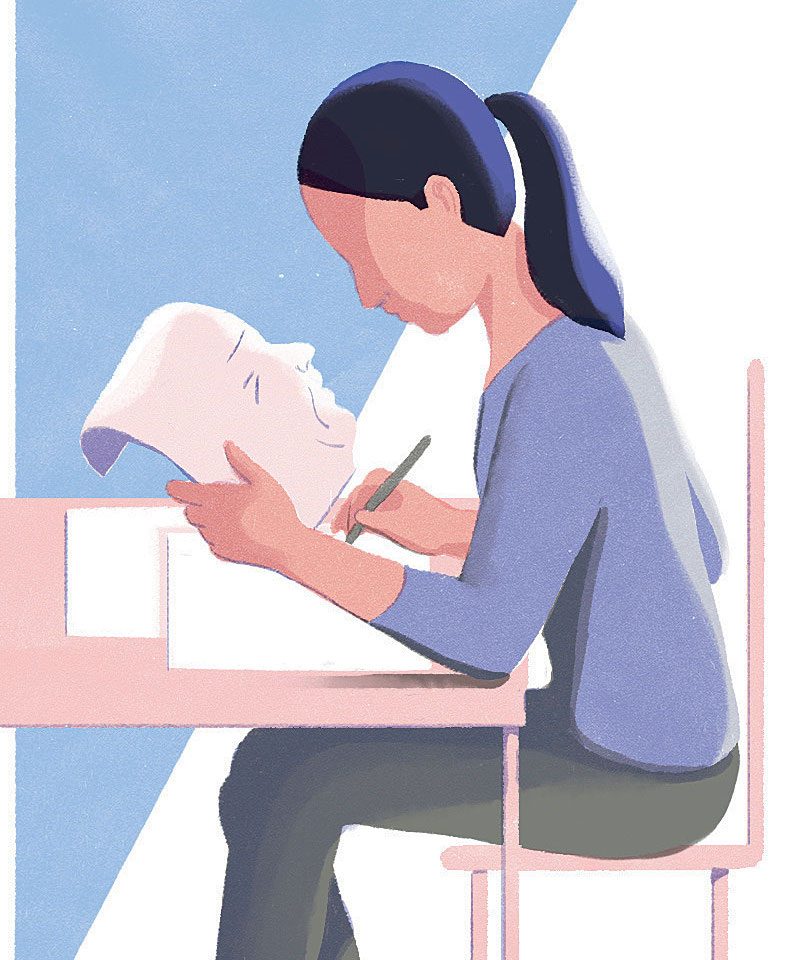
End of Life Planning Guide
Getting Your House in Order
Prepare a will
Death is one of those things many of us avoid thinking about until it’s absolutely necessary—it’s often too sad, too scary, too morbid. A 2018 Angus Reid survey showed that more than half of Canadian adults don’t have a signed will or personal directives. When asked why, many respondents said they thought they were too young. But you can save your family extra heartache by planning and budgeting for your end-of-life decisions early. Ian MacDonald, an independent funeral planner in Halifax, believes the purpose of a funeral is to help the living. “You’re helping them transition from life with someone they love to life without,” he says.
Form an advanced care plan
At the same time you’re moving forward in life—saving up for your first house or your kids’ education—you should be planning for the end of your life. Even in your 30s, it’s smart to have an advanced care plan, which outlines what you’ll tolerate in terms of medical care and life support, what should happen to your body, and how you want to be celebrated. An advanced care plan eliminates the guesswork involved in end-of-life decisions and, once someone’s gone, allows people to grieve instead of scrambling to make funeral decisions. “If you have life insurance,” MacDonald says, “you should probably have end-of-life planning.”
Save for your funeral
Like most milestone events, how much a funeral costs depends on how elaborate it is. Even a mid-range funeral can cost as much as a downpayment on a house—and many people don’t want to surprise their loved ones with the bill. Prices vary, but Brett Watson, president of the Funeral Services Association of Canada, estimates the average funeral-home package—including embalming, a casket, flowers, music and catering—costs around $10,000. A burial plot and marker might cost another $7,000, depending on how desirable the real estate is. Many life insurance policies include funeral insurance, while some people instead make their own arrangements with funeral homes, prepaying into a trust.
Whatever you decide, it’s useful to do some research and go in with an idea of what you’d like—no matter how uncomfortable it may seem. “This is an industry that’s there for profit,” says MacDonald, “and you want to get good value for your money.”

Green Your Death
A growing number of Canadians are making their end-of-life plans more environmentally friendly. Direct cremation, for example, skips the embalming process, which often requires toxic chemicals. It costs an average of $2,500 and can involve scattering the remains or burying them in a biodegradable urn. Alkaline hydrolysis, or flameless cremation, uses water, pressure and sometimes heat to dissolve the remains. Finally, there’s direct-to-earth burial, which also dispenses with embalming and involves depositing the remains straight into the plot, either in a shroud or a biodegradable casket.
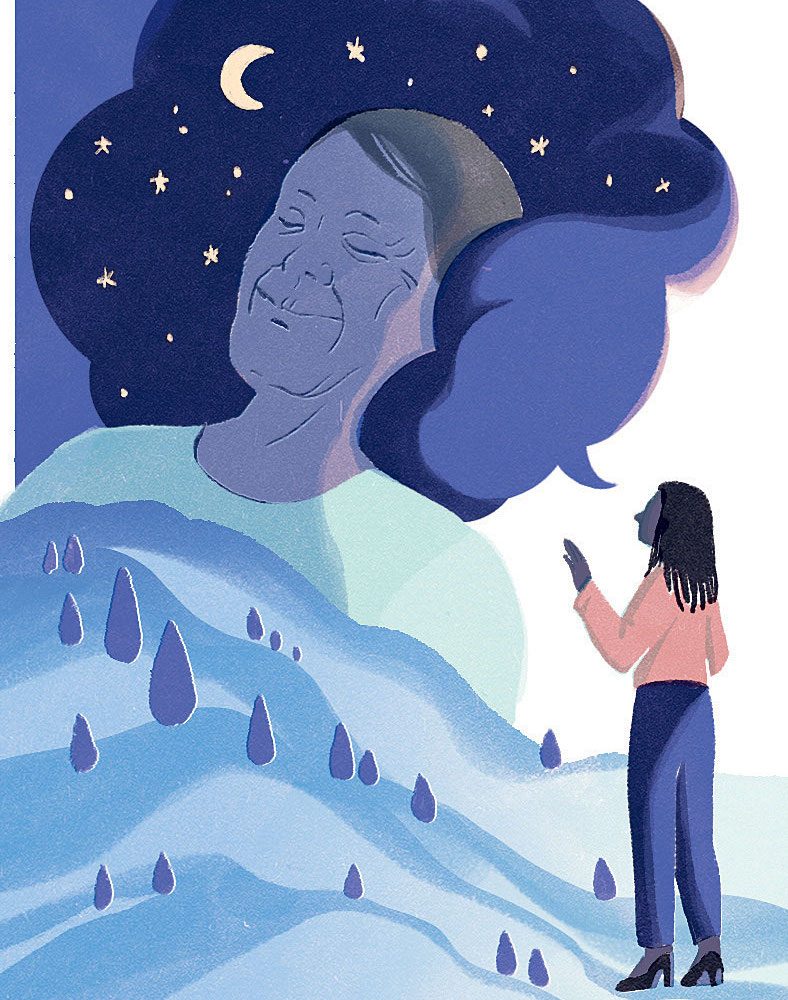
Hire a Death Doula
Chelsea Peddle is a death doula: one of dozens of professionals in Canada who provide emotional and practical guidance for people near death and for their families. She earned her credentials at Dawson College, in Vancouver, but was originally set on this path at age 15 when her father died of an aggressive brain tumour. The experience had initially left Peddle with a crushing fear of illness and death. “I know what it’s like to feel lost and to not know what benefits and resources are available,” she says, “or even how to be with someone who’s dying.”
About half of Peddle’s clients today are in palliative care. Many are undergoing treatments, such as chemotherapy, for terminal illnesses. Every one of them is simply trying to wrap their head around the process of dying. She acts as a sounding board, directs them to resources, and helps them cope with the big emotions that come with knowing you’re going to die. “Sometimes there’s a sense of unfairness,” she says, “but a lot of the time there’s also this amazing level of acceptance.”
Facing death is often harder for the families. One of Peddle’s clients, for example, was recently caring for her sick mom in the U.S., living away from her family in Victoria, B.C., and felt guilty and conflicted for wanting the whole thing to be over already. Peddle helped her process those tough feelings and release the shame she was holding. “She had no idea that it was an entirely normal way to feel,” Peddle says. “She was so relieved that it didn’t make her a horrible person and that she wasn’t alone.’”
Find out seven things you should never say at a funeral.
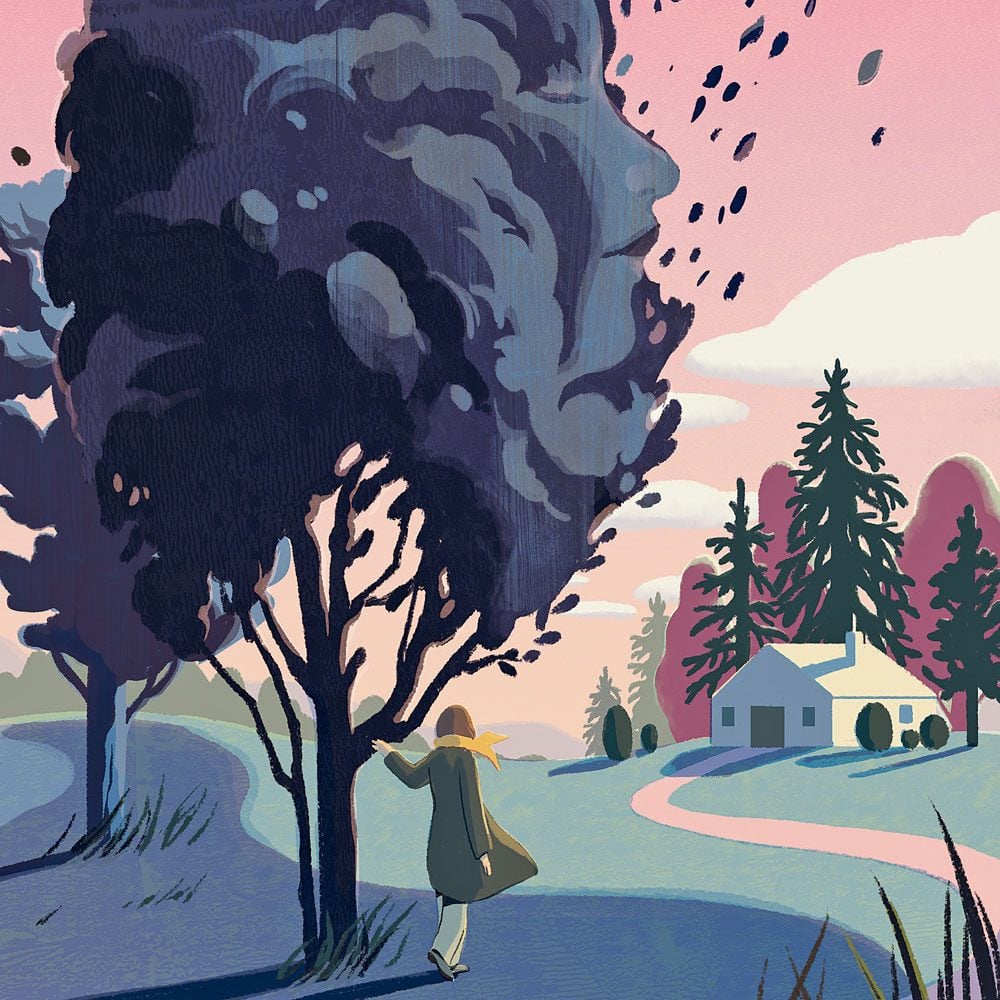
Personalize Your Memorial
Gregory Williams, a tattoo artist, carver, musician and member of the Haida nation based in Skidegate, B.C., has always been fascinated by tattoos. “For me,” he says, “tattooing is understanding our past, living for the present and dreaming of the future.”
Williams’ daughter, Kaiya, was diagnosed with neuroblastoma, an aggressive cancer that targets nerve cells, at age five. Kaiya was smart, spunky and stubborn. She loved art and music and her home on Haida Gwaii in B.C. She went into remission once but died in 2013, when she was 10. “When she passed, I thought my heart was going to stop,” Williams says.
Like many people, he saw an opportunity to use the art he loves to cope with his grief. Williams got several tattoos in honour of Kaiya, mixing his daughter’s ashes into the ink. One forearm tattoo depicts a raven, which represents his family’s clan and Kaiya’s heritage. He also has a tattoo of a spirit face on his throat—the placement represents her love of singing and music, and the subject represents her move from the physical to the spiritual realm.
“At times it’s difficult for me to do anything because I feel guilty about why I get to live,” Williams explains. Looking at the tattoos reminds him to live for his family. “They give me the strength that I need to not only move on, but to remember Kaiya for who she was as a person.”
Find out how a special quilt keeps the memory of this woman’s husband alive.
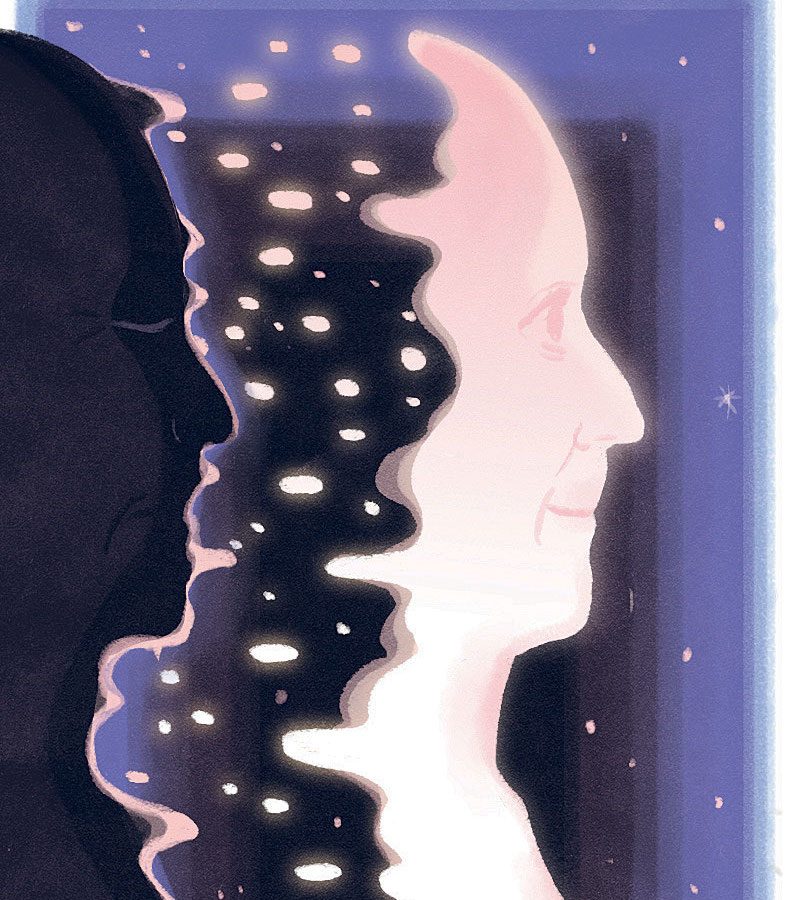
Don’t Leave Loose Ends
The estate planner
Willful.co
Founder Kevin Oulds created Willful, his Toronto startup, in 2017 after his uncle died and left him to deal with a complicated estate. Using Oulds’ web service, will creation is as fast, cheap and secure as online banking or grocery shopping: you answer specific questions about your assets, family status and life situations, and then the app generates a legally sound estate plan. The whole process takes about 20 minutes—and all but eliminates the need for stratospherically priced estate lawyers, who may charge between $200 and $500 per hour. From $99.
The digital lockbox
Everplans.com
Gone are the days when family members had to ransack boxes and bank accounts to sort out their loved ones’ affairs. Instead, Everplans serves as a one-stop shop where meticulous planners can securely store all of their essential documents for their families to access after they die. Financial information, digital passwords, life insurance policies—they all go here and can be accessed by designated executors. US$75 per year.
The millennial manual
Joincake.com
The sleek and sunny end-of-life planning service designed by MIT brainiac Suelin Chen is largely targeted at 20- and 30-somethings seeking a head start on their end-of-life planning. Users fill out a profile, dating-site style, selecting how they want to deal with their medical care, legal documents and social media accounts. Cake is also stacked with breezy, approachable resources to educate users about matters like life insurance and power of attorney. Free.
Pick the Right Time
In June 2016, the federal government passed Bill C-14, the landmark legislation that empowered Canadians to seek medical assistance in dying, or MAID. And in 2020, more than 7,500 people availed themselves of this right. But what does the legislation mean for patients and caregivers? Here’s a look at the ins and outs of physician-assisted death.
Step 1: The Criteria
Not every patient is eligible for MAID. First, patients have to be at least 18 and determined by a physician to be mentally competent. Next, they must have a grievous or irremediable medical condition. “That means they have to be in an advanced state of decline that cannot be reversed, they have to be experiencing unbearable physical or mental suffering and their natural death has to be reasonably foreseeable,” says Helen Long, the CEO of Dying With Dignity Canada.
Step 2: The Assessment
Anyone who wants a physician-assisted death is required to make a written request confirming they’re mentally competent and not subject to undue influence. Depending on the region, an official form may be required. The request also requires two witnesses who meet certain criteria—for example, they must not benefit financially from the MAID-requester’s death. After the form is completed, you can see a doctor or, in some provinces, a nurse practitioner. You will also need to undergo two assessments with whoever you choose to make sure you meet the criteria.
Step 3: The Location
MAID can take place wherever the patient is most comfortable. According to the federal government, 47.6 per cent of MAID patients died in their homes in 2020, while 28 per cent died in hospital, 17.2 per cent died in a palliative care facility and 5.7 per cent died in a residential care facility.
Step 4: The Procedure
Before going ahead with MAID, you’re typically required to wait at least 10 days to ensure it’s what you want. Then, if you still decide to complete the procedure, you need to find a doctor who’s willing to do it. The medications for MAID are administered intravenously and designed for a peaceful and painless death. Many physicians use a cocktail of midazolam, propofol and rocuronium: the first puts the patient to sleep, the second sends them into a deep coma and the third is a muscle blocker that stops the heart.
Step 5: The End
A scheduled death can allow people to say goodbye in the way they want. According to Helen Long, a MAID is often like a celebration of life—except the guest of honour gets to be there. “A friend of my dad had a classic car, and he and his son went for one last drive around the neighbourhood,” she says. “Once a person makes a decision, it’s often a very freeing experience for them. It gives them back their control.”
Recently bereaved yourself? Here’s expert advice on how to cope with the death of a loved one.

Once the Vibrant Heart of Our Community
If you were a stranger passing through our town of Castor, Alberta, you would probably dismiss the old grey building at the corner of Prospect Street as just another empty, derelict building in a small town. Though the print is worn and faded, and the lettering is barely distinguishable, the ancient red and silver sign hanging above the front door indicates this was once Jesse’s Café.
My first memories of the place were as a teenager. During my “rebel without a cause” stage in life, I learned to smoke in one of the back booths with my friends. We would feed the jukebox money and it would pound out the wild music of the 1950s, while we drank our pop and smoked our cigarettes. We were cool—the guys with their ducktail haircuts, the gals sporting the latest “Poodle Cut” or “Beehive.” Yes, we were living the dream at what was then called “Bob’s and Louie’s Place.” Though the place was a haze of blue smoke, my friends would inevitably spot my father coming in for his afternoon coffee and warn me to “Butt it—here comes your dad!” This did not help in the cultivation of my cool image.
This café was once the vibrant heart of our community. It was built in the early 1900s and passed through many owners and had many names, until it came to be fondly known as “Andy’s,” after one of the most popular proprietors of all.
New in Town
Andy himself was a quiet sort. The year he arrived in our small town is uncertain, but it seems as though he was always here. He went about life raising his children, unobtrusively living above the café and working hard. Occasionally, when he needed time off, you would see a sign pasted on the outside of the door, saying “SORRY CLOSED.”
If those old walls could talk, they would tell tales of the first time Chinese food came to a growing Prairie town. A change of culinary taste for the meat-and-potatoes crowd! Today, those walls would describe how Andy’s Chinese food soon became the best in East Central Alberta. Among the “westernized” favourites were lemon chicken, ginger beef, dried ribs, egg rolls, fried rice and chow mein, to name a few. Not only was Andy’s “westernized” Chinese food the best, it was the freshest! Andy could be seen daily buying fresh produce to cook with.
Andy was a magician in the kitchen. At noon the local students would invade and Andy would be ready for them. You’d get a hamburger, fries and a pop for $5.00! And this price would remain unchanged until the day the students graduated from school. Paying adult prices at Andy’s was a rite of passage.
Over the years, the decor changed from stools along the counter and booths along the side walls to an array of individual tables. The jukebox vanished. If you were lucky on a cold day, you would get the table nearest to the giant heat register. On rainy days, you had to navigate a maze of plastic sheeting and pails within the café, Andy’s basic countermeasures to cope with a leaky roof.
The ceilings were made of embossed tin, and the walls were unstable to say the least. Local, unconfirmed lore has it that a certain Nobel Prize winner in the making, accompanied by his junior high friends, used to bang on the outside walls until objects on the inside fell off their shelves. An experiment in applied physics, perhaps!
Loved By All
Then there was the coffee crowd. Many business deals were made around those worn-down tables at Andy’s. And politics were argued; hockey wars fought; insults traded—all in good fun. Strangers would stare in alarm if they happened into the café at 10 a.m. or 3:00 p.m., when rowdy “discussions” usually took place to determine whose turn it was to pay for the coffee. More often than not, when the stranger went to leave, he would find that his coffee had already been paid for by one of the coffee regulars.
If you wished to have more than coffee at your birthday party, you could bring your own cake and ice cream, with paper plates and forks. If there was a local tea and bake sale happening, Andy would hint at how nice it would be if one of the regulars were to make a purchase at the sale—and bring some nice home baking to the café.
But, as a patron, you had to stick to Andy’s way. If you came at the wrong time of the day, or failed to order the daily special in favour of something else, Andy would inform you, “Not today.”
Andy was loved by all. When he closed his doors for the final time in 2017, one of the biggest crowds ever to gather in the local community hall came by to say goodbye to Andy Wong.
“SORRY CLOSED” took on a whole new meaning that day.
Next, find out what Prairie life was like during the Great Depression.
Walking into our bedroom, I found my husband, Barry, looking forlorn, sitting on the edge of the bed. I sat down beside him, put my arm around his shoulders and quietly said “I love you.” He turned and said “I’m so glad you said that.” It was then I realized I couldn’t remember the last time I had told him that I loved him.
I was so wrapped up in looking after him for the past few years, taking him to medical appointments, making sure I had all his medication with me, as well as a sandwich in case we had to be in the waiting room over lunchtime—which was often. We always got there before 10:30 a.m. for an 11 a.m. appointment to find the waiting room full of patients with appointments for much earlier than ours. Luckily, some kind person would usually give Barry a seat. As soon as noon arrived, I would get out his lunch and a small bottle of water. His pills had to be taken at specific times with food. Eating a sandwich in a crowded waiting room and taking medication while squashed between two other patients, was embarrassing and uncomfortable.
Towards the end, there were nights we had to call the ambulance to take him to the hospital where he would be kept for observation and then released the next day with new medication. Barry, who had always been in charge of things, now had no control over his life.
We had a wheelchair lifter put in the back of our van because it was difficult for me to get the chair in and out. I never really got the hang of it and it would be tossed around in the back as we drove. I remember one time we had the last medical appointment of the day and it was cold, dark and raining. The other cars were all leaving and I was having difficulty hooking the heavy wheelchair onto the lifter to get it in the back of the van. I just didn’t have the strength but then an angel appeared out of the darkness and immediately took hold of the chair saying “Here, let me help you.” This kind lady made sure the wheelchair was secured and asked if there was anything else she could do to help. I had been trying for about ten minutes and any cars still parked when we had come out had slowly driven by and left. All I could do was keep thanking this wonderful lady—it didn’t seem enough.
It has been over a year now since my dear Barry died. It was a good time for him to leave us and not have to suffer through this pandemic. I think of him every day and I am thankful for the 59 years and three wonderful children we had together. I am also so thankful that he l knew I loved him because I was able to tell him, even at the end.
Next, read one woman’s reflections on a lifelong romance.
In today’s technology-flooded world, it can be easier than ever to communicate with people. But it can also make it easy to stop someone from communicating with you, with the push of a button or two. And if you text someone and continue to get no response, you may wonder if this has happened to you. Can you tell if someone blocked your texts? (Find out how to tell if someone blocked you on Facebook, too.)
Can you know for sure?
We should start by saying that there’s no definitive way to determine that you’ve been blocked; for instance, you’re not going to get a notification or see an indicator in that person’s contact info. That would infringe on the privacy of the other user. But little clues like the lack of the “Delivered” message (on iPhones), as well as what you hear when you call the person, can help you determine if they’ve blocked you. Indeed, finding out if someone blocked your phone number is far easier if you have an iPhone, and if the person you’re texting does as well.
How to know if someone blocked your number on iPhone
There are a couple of methods to determine if someone blocked your number. Justin Lavelle, Chief Communications Officer with BeenVerified.com, breaks down how to know if someone blocked your number if you have an iPhone.
Take a look at your texting app, which will most likely be iMessage. “Most likely, when you send a message, you will get a ‘delivered’ confirmation when the message has been delivered,” he told Reader’s Digest. When you look at your messages with the person you think blocked you, look for that confirmation. “The last message that you know was received and responded to…should have a ‘delivered’ status,” Lavelle explains. If, under the messages you’ve sent after that, you don’t see that “delivered” notification, that could mean that person has blocked you.
Another method involves giving that person a call. “If you call a specific number and it immediately goes to voicemail, or you get a strange message such as ‘temporarily out of service’ or ‘the person is not taking calls,’ this may mean your number has been blocked,” Lavelle says. (Stumped as to why you’ve been blocked? Maybe you’re guilty of these annoying texting habits?)
How to know if someone blocked your number on Android
Things are even less clear if you or the person you’re texting has an Android phone. Android phones don’t have that “delivered” message on texting, and even an iPhone user won’t see the “delivered” notification while texting an Android user. So how to tell if someone blocked your number from texts with an Android phone?
If an Android user has blocked you, Lavelle says, “your text messages will go through as usual; they just won’t be delivered to the Android user.” It’s the same as an iPhone, but without the “delivered” notification (or lack thereof) to clue you in. “The simplest way to tell if you have been blocked by an Android user is to call,” Lavelle says. Just like with an iPhone, listen for it to be diverted to voicemail or play you a pre-recorded message. Of course, this doesn’t automatically mean that person has blocked your phone number; your call may be diverted to voicemail for other reasons. But if it happens repeatedly, and you’re getting radio silence from both calls and texts, you should consider that you’ve been blocked.
Next, find out how to stop spam text messages on an iPhone or Android.
My dad was never much of a talker. He held his cards pretty close to his chest—so to speak, because he never gambled. He rarely drank, so we didn’t get to see him loosen up after a few beers. He didn’t tell stories about himself at the dinner table or when we went for walks in the park. He was a private person and seemed to want to stay that way.
Bringing up the many questions I had about life before I was born—his early hopes and dreams, loves and heartbreaks—let alone sharing my own feelings, felt like too much for us to handle. I didn’t want to threaten the integrity of his hard shell. I had gotten used to it, and it made me feel secure.
But when my relationship and career simultaneously took a hit a year ago, things had to change. I needed my dad to pull back the curtain so I could see him as mortal. I was facing serious questions about my own nature, and I wanted to know that he had faced them, too. I needed to know how he had found his way, because I felt like I had lost mine.
In an acute moment of desperation, it occurred to me that sending an email might be the key. An email can be crafted slowly and carefully. I could speak at a comfortable distance and give him room to adjust. He’d be up in his office—his “cubbyhole,” in my mom’s words—a comfy fortress of junk filled with bookshelves, dusty CD-ROMs and stacks of old newspapers. I’d be at my desk in a basement apartment 20 minutes away, in downtown Toronto.
So I wrote him a message. I told him about my regrets and fears, and I asked him to answer, if he felt like it, and to share something about himself, something that would give me much-needed perspective on both of our lives.
Two weeks later, it showed up in my inbox: a scanned, three-page, point-form document with the title handwritten in my father’s distinctive all caps: “GIRLS I LIKED, BY LUIGI C.” Dad, a 68-year-old retired Nortel technologist and grandfather of four, had carefully considered my message, reached back into his memory and crafted a response—his history of love, longing, self-doubt, struggle and perseverance.
I learned about girl No. 1 (already one more girl than I had ever imagined), Angela Scattarelli, who used to live next door to him. “Sicilian” was written in brackets beside her name. He had “tried but never really had enough gumption” to ask her out. More than 40 years later, she still made the list.
There were girls from his days as a stock boy at a grocery store in Toronto’s east end, like Michelle, an “English” cashier. Dad wrote, “When they rang the bell for bag packers, I tried to go to her first.” He had his first kiss with Michelle—after a few dates in his father’s Beaumont—but lost out when she decided to reconnect with an old boyfriend. Still, progress!
After a few more “English” girls, he went back to dating “paisans.” I got the sense that it must have been difficult for my dad to date outside of his culture. Even though he came to Canada at the age of 10, he had settled in an immigrant community. The few friends he had were mostly Italian, and families would spend a lot of time visiting relatives in the evenings and on weekends. With the “English” girls, the culture shock must have gone both ways.
Some of the Italian girls appeared as just first or last names, along with scant details. The fates of these women ranged from comic (“Later saw her at a wedding party, married to a tall dude”) to tragic (“She went back to Italy to marry; we found out later she had died in childbirth”).
Then, the final entry, No. 10: Antonietta Larocca. She got the most space, with details about how they had met (“through my Aunt Antonietta and Uncle Rocco”), what they had done (on one date, a screening of Play It Again, Sam) and the “many telephone calls from the Old Mill subway station after work.” The list ended with an enthusiastic bullet point: “Antonietta and I prospered from our union. Here we are in 2014 and still in love!!!”
I had never doubted my parents’ bond. It was there in the kiss they shared when exchanging Christmas cards (the only kiss we’d get to witness all year) or in the way they could smile at something the other had said, even while arguing. But it was seeing their love in writing, his writing—and in the context of a life that could have followed one of the many roads not taken on Dad’s list—that gave me courage.
I closed the email and started to cry. I cried because I wished I had opened up earlier but was grateful it wasn’t too late, and because I thought I knew him and now realized there was so much I hadn’t discovered. I cried because it felt as if I hadn’t been able to ask him anything of consequence about his life in all this time; instead, I had focused on not sharing anything about myself with him. I cried because at 33, in the midst of my own struggles, his letter instantly put me at ease. And I cried because in the end, it was so simple: I just had to hit “Send.”
We’ve since had many email exchanges. I’ve asked about his childhood and his relationship with his own parents. Some days I can even ask my dad questions face to face without getting a lump in my throat. Better yet, he occasionally offers up stories without me asking, like the one about the time he and his friend Antonio skipped school to see a movie (they got caught the next day when Antonio spilled the beans).
And I’m talking more, too. My problems haven’t been magically solved, but getting to know my dad better—and learning to love him more—has made the tough stuff more manageable and life sweeter.
It’s hard to talk to dads sometimes. I’m glad I found a way to talk to mine.
Next, read the heartwarming story of how one man reconnected with his mother.
Our entire lives run on electricity, and if we’re being honest here, no one’s house has enough power outlets to keep everything running and charged. That’s why we rely so heavily on power bars to turn one plug into six or more, stretching the capabilities of our home’s electrical system. But there are a few rules you’re probably breaking when it comes to power bar use. Here are nine things you should never do with power bars.
Never plug a power bar into another power bar
If your power bars don’t reach quite far enough or you need some extra plugs, it’s tempting to string multiple bars together, daisy-chaining them by plugging one into the next. In a word—don’t. Not only is it against half a dozen regulations in a professional setting, but it can also cause one or more of the bars to fail or even catch fire.
Never use indoor power bars outdoors
While there are power bars that are designed for outdoor applications, unless your bar’s packaging specifically says it’s suited for outdoor use, it’s not designed to stand up to weather and water. Keep it inside and find one you can use safely out in the elements.
Never overload a power bar
Every power bar has a load capacity, which means it can only move so much power through its circuits at any given time. Overloading the bar can create a fire hazard, melting the plastic and damaging your home or business as well as any surrounding equipment. If you’re worried about overloading a power bar, take the time to determine the amperage requirements of everything you’re going to plug into it. Or perhaps consider buying a power strip that has a separate switch for each outlet.
Never put a power bar under a rug
As electricity moves, the electrons can generate heat. Normally, this isn’t a problem, but if you put your power bar under a rug or in a tightly enclosed space, it can create a fire hazard. In addition, if you step on it or any attached power cables, you can damage them, which can create a shock and/or fire hazard. (Create a safe environment and check your surroundings for potential dangers with our healthy home checklist.)
Never plug beauty tools into a power bar
Hairdryers, curling irons, straighteners and other beauty tools all create heat and draw quite a bit of amperage to generate that heat. Power bars aren’t designed to generate that kind of consistent high amperage, so these beauty tools should be plugged into a GFCI-protected outlet.
Never use a damaged power bar
How many times have you looked at a power bar, seen one burned-out outlet, then just plugged your device into the next socket that seemed okay? Don’t do that. If one socket is burned, chances are high that there is internal damage inside the power bar. That’s a fire hazard.
Never get a power bar wet
This should be common sense, but it happens often enough that it bears repeating. Electricity and water do not mix. Don’t get your power bar wet, or you risk frying yourself and everything that’s plugged into the strip.
Never plug in a sump pump
Not only do you not want to get your power bar wet, you also don’t want it in areas with wetness potential, such as bathrooms and basements. It might seem like a good idea to plug your sump pump into a power bar, but think again. Better to go with a GFCI outlet that’s well above floor level in case the sump pump fails and flooding occurs.
Never leave them near children
A quick Google search will show you plenty of horror stories about kids putting fingers, toys and forks into outlets and power bars. Don’t assume that they know better. Teach them to stay away from outlets, install outlet plugs in all wall and power bar outlets and don’t leave power bars in places where young children might think they’re something to play with.
Next, brush up on these house fire facts to keep your family and property safe.
Cold weather can directly impact your car, and it’s a good idea to be prepared for the changing of the seasons.
But that doesn’t mean all of the concerns around winterizing your vehicle are worth worrying about. You may have heard before that if you keep less than half a tank of gas in your car during the winter, the gasoline could freeze in place and ruin your gas tank. This might seem like a real concern at first, but it falls apart under any further investigation.
In order for gasoline to freeze it needs to be held at temperatures around -73.33°C. That number will vary depending on the components that make up your gasoline (octane, for example, has a higher freezing point), but the point remains the same. The freezing point of gasoline is so extreme that it’s highly unlikely that temperatures in your area would ever drop to the point where gasoline is freezing in your vehicle, and it’s even more unlikely that anyone would be driving or want to drive in those conditions. (Find out the coldest temperature in Canada’s history.)
This doesn’t mean cold temperatures won’t have any negative effects on your gas tank, however. Condensation can bring water into your gas tank, and if that freezes it can cause a whole host of issues. The cold can also cause gasoline to break down and separate into its components, turning into a useless gel. Diesel fuel has a lower freezing point than regular gasoline, which is why fuel companies typically provide a summer and winter diesel blend.
Now that you know the freezing point of gasoline, check out a genius hack to defrost your windshield fast.
Icy, snow-covered roads demand salt and other ice-melt techniques to make them passable in winter. While road salt (i.e. snow salt or ice salt) and brines are critical to keeping roads safe, they can also damage your vehicle over time.
How does road salt harm cars and trucks?
Most components of cars, including the body, suspension and brake parts, are made of steel, which itself is an alloy of iron with carbon and other elements. When iron meets water and oxygen, a chemical reaction takes place that creates iron oxide, otherwise known as rust.
Salt enables electrons to move more quickly within that chemical reaction, not so much causing the rust but rather accelerating the rust-creation process on bare steel components.
Often, rust will start on bare metal fasteners and suspension components on the underside of the car; typically, the paint on a car will protect the bodywork you can see. However, if that paint is damaged in any way, exposing bare metal beneath, that’s a likely starting point for rust. The lowest edges of your car are most likely to see rust, as they are vulnerable to rock chips that you might not notice in everyday driving. (Don’t miss our guide to car paint repair.)
How does rust affect my car?
Those bare steel components include many of the fasteners holding your car together. This means headaches for DIYers trying to break loose rusty bolts when doing a simple brake job at home, for example.
Professional mechanics, despite years of experience and a shop full of tools, experience the same frustrations, adding time (and therefore cost) to repairs. The list of challenges rust damage presents is long and includes some critical safety components, says AJ Nealey, owner of Nealey Auto Service in Edgewater, Maryland.
“Lately we’ve been seeing rusty brake calipers, caliper slider pins and even occasionally steel brake lines that rust through,” he says. “We also see control arms [suspension components] so rusty that you can push through them with your fingers.”
How do I prevent salt from damaging my car?
Thankfully, there are multiple ways you can prevent the rust damage that salt causes:
- Wax your car before winter. Waxing your car won’t work well in low temperatures, as the wax becomes incredibly difficult to spread on the car as the temperature drops. But in the fall, application of a good-quality wax gives your paint an extra layer of protection from the elements. (Here’s what you need to know before waxing your car.)
- Wash frequently. Washing your car in the winter physically removes the road salt to prevent its role in creating rust. “After a winter storm, drive through an automated car wash—maybe twice, since road brines can stick to the underside of the car,” Nealey says.
- Avoid driving behind snow plows. While driving in the freshly-plowed wake of a municipal snow plow seems appealing, remember that the plow is likely also dropping salt, which will happily stick to your car. Give the plow some room to work and protect your car in the process.
- Avoid deep puddles. Those gray puddles of melted snow are filled with filthy, salty water that will splash onto the undercarriage of your car as you drive through them. Sometimes they’re unavoidable, but if you can stay away, do.
- Consider an undercoating. Opt for the dealer-added undercoating spray when purchasing or have an undercoating applied by a reputable local shop post-purchase, Nealey says. This gives your car an additional layer of protection to keep those fasteners and the sheet metal from being exposed to water and salt. Find out the best rust proofing option for you.




